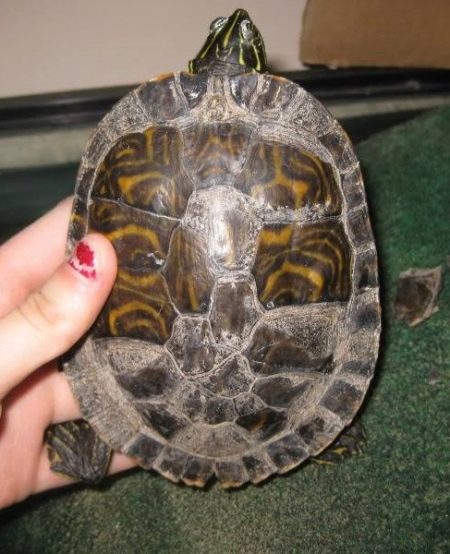All about molting in red-eared turtles
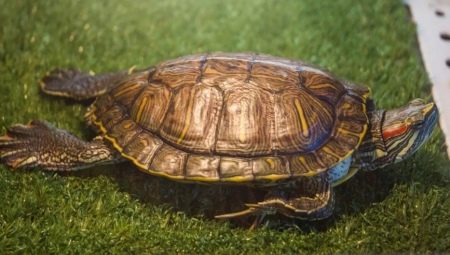
Many people give birth to red-eared turtles without first studying the features of their development. Therefore, when faced with molting for the first time in these reptiles, they do not know what to do in such a situation. To make life easier for yourself and your pet, it is worth studying the characteristics of the body of turtles, as well as their needs during the renewal of the shell.
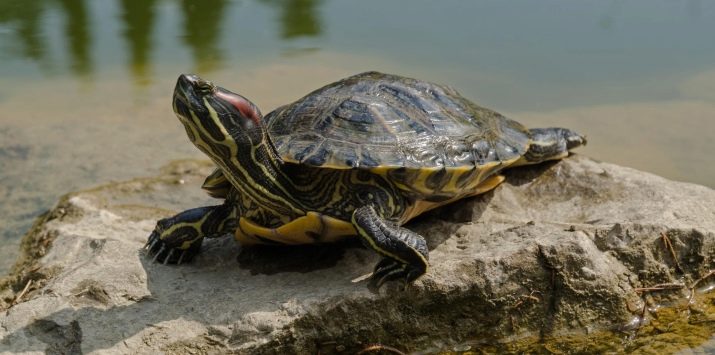
Moulting features and frequency
Red-eared turtles often molt at a young age. This can even happen twice a month. The rate of molting at this time depends on how quickly the animal is growing. If the turtle is active and well fed, then this frequency of molting should not alarm its owner. After all, the animal is simply trying to get rid of the old shell, which has become cramped for him.
Together with the shell, the skin of the animal often sheds. But this process is almost imperceptible.
With age, turtles begin to shed less often. This process ends after the end of the formation of the animal's body. If a very adult reptile is molting, this may indicate that the animal is sick or lacks something. After all, usually the animal stops changing its shell at 4-5 years.

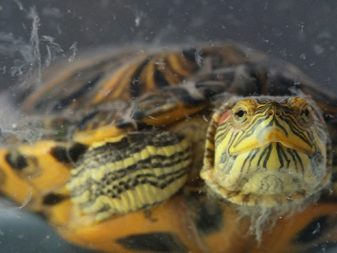
The molt of a young and mature turtle looks different. This must be taken into account when observing the animal. In a small turtle, detachment of both individual scales and the whole shell can occur. This can look intimidating. But such a process is natural and safe for any turtle. In adult reptiles, much less dead tissue comes off the shell.
The nuances of caring for a turtle
In order for a turtle living at home to survive the molt well, it must be properly looked after. Special attention should be paid to the following points.
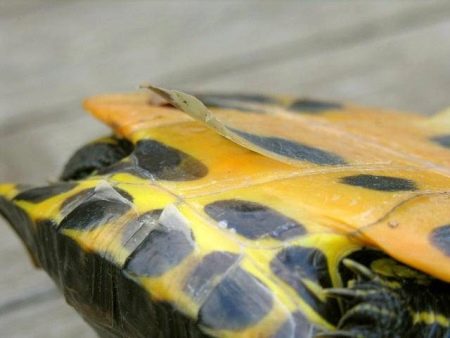
Nutrition
In order for the turtle's body to develop properly, it is important to pay special attention to the nutrition of the animal. Don't completely change your pet's diet. You just need to add more foods containing vitamins and calcium to it. During molting, it is recommended to feed the turtle with small crustaceans and fish. You can also add bone meal or crushed eggshells to her food. Many reptile owners buy food fortified with vitamins from specialized stores.
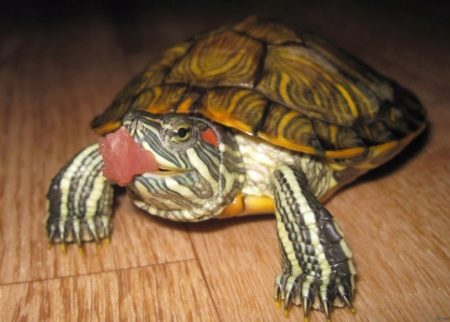
They should be bought after consulting a veterinarian.
Compliance with the daily routine
You should not radically change the lifestyle of your pet. During the moulting period, the turtle should be in a comfortable environment. In this case, she will not have additional reasons for stress.
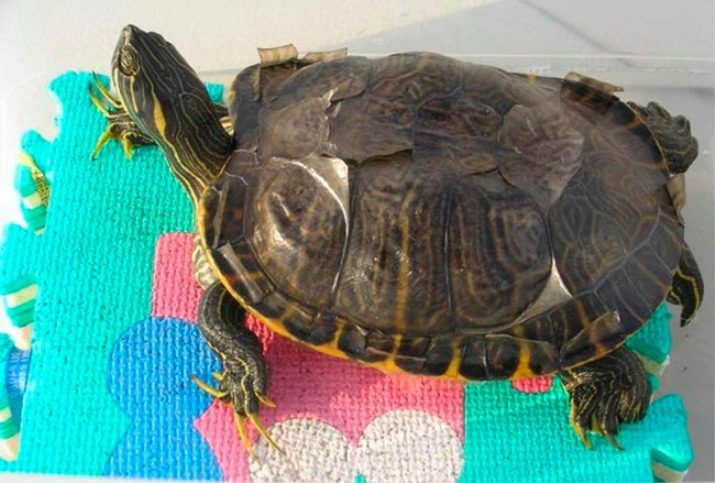
Cleaning the aquarium
Pieces of tissue that peel off the surface of the carapace usually remain in the aquarium. Various bacteria can grow in polluted water. Therefore, the water in the aquarium should be changed more often than usual. If possible, it is worth installing a good filter there.
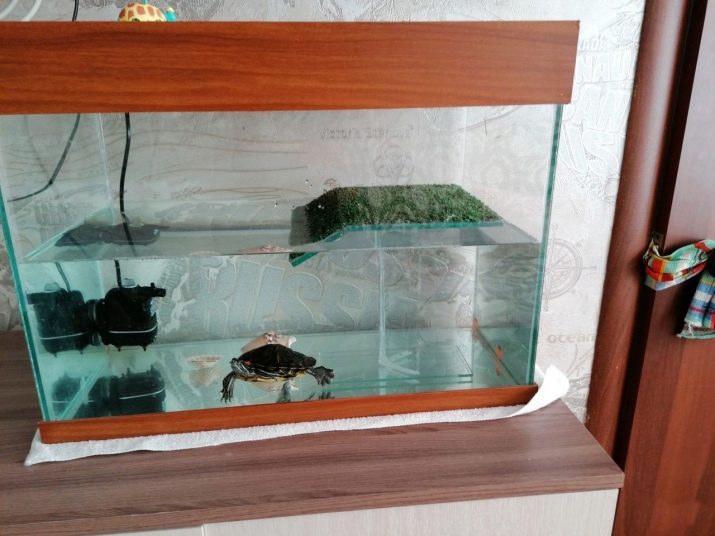
Carapace cleansing
Many experts recommend bathing turtles during molting. This is done in order to remove impurities from under the scales of the shell. If you ignore this simple rule, your turtle can get sick. The process of bathing a reptile does not take much time. It must be placed in a container with low sides. In this bowl, you need to collect some warm water. You also need to add baking soda there.
Only one teaspoon of the product is used for one liter of water.
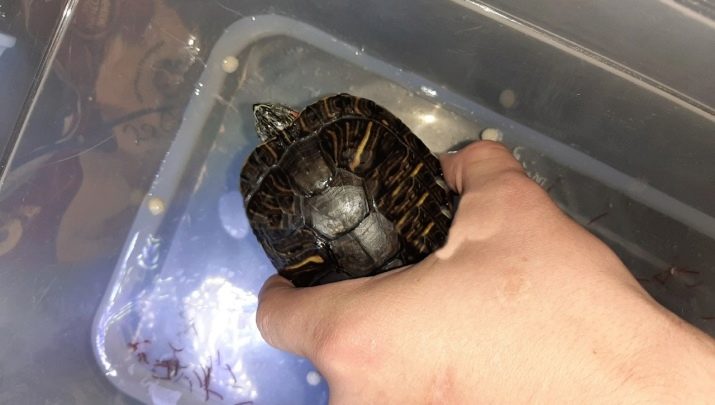
The turtle needs to be carefully planted in a bowl. It is important to make sure that her head is not submerged under the water. Remove the turtle from the bowl 15-25 minutes after bathing. Pat it dry with a dry paper towel. It is worth bathing the turtle in this way no more than twice during the entire molting period.
Shell processing
After bathing, the shell of a molting red-eared turtle is recommended to be lubricated with a small amount of olive oil.... Additionally, you can use chamomile broth for wiping. Dried flowers can be bought at any pharmacy or prepared in the summer. Regularly rubbing the shell will help your turtle speed up the shedding process and also make it less painful.
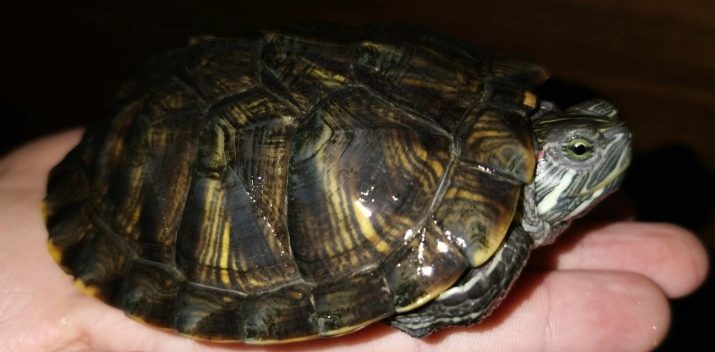
Sunbathing
In order for the body to form vitamin D in the turtle's body, it must be irradiated regularly with a UV lamp. In the summer, the pet can be taken outside for a short time. It is recommended to walk the turtle in the shade, making sure that no direct sunlight falls on the shell. The walk should not take more than two hours.
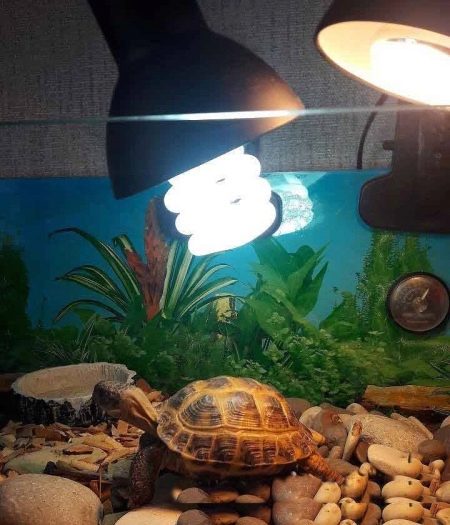
In order not to harm the pet, you should not try to forcefully tear off pieces of dead tissue from the shell. This should be done only if the skin does not fall off for a long time, and the turtle begins to suffer because of this. This should be done slowly and carefully. Exfoliated skin from the surface of the body can be removed with a soft toothbrush or cotton swabs.
If this is not done, the turtle will try to peel off the scales from its skin, harming itself in the process.
How to distinguish molting from disease?
Owners of red-eared turtles should be aware that there are many diseases that resemble moulting in their symptoms. Noticing that the animal's shell is peeling off, you need to take a closer look at its general condition.
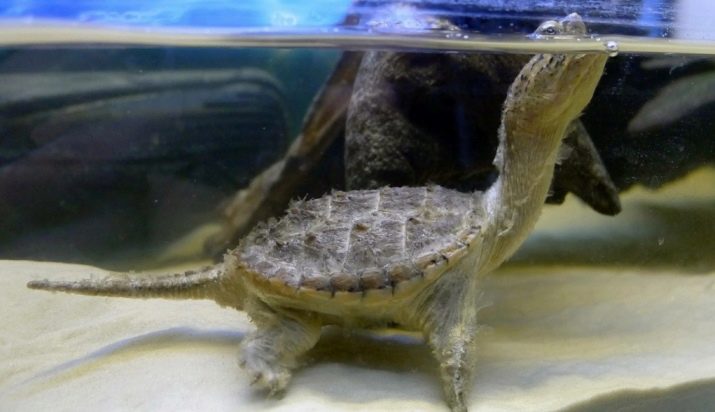
Fungus
Various fungal diseases lead to the fact that parts of the skin of the animal exfoliate. They are exposed to weakened turtles, which spend little time in the sun and do not eat well. You can understand that an animal is sick by the following signs:
- white spots appear on the turtle shell;
- the animal is constantly itching;
- small pieces of skin are separated from its shell;
- acne and small ulcers appear on the skin.
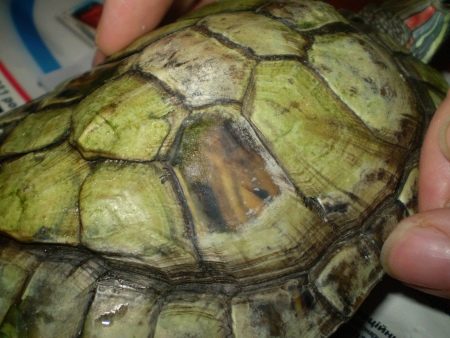
Having noticed all these signs, you need to immediately deal with the health of the animal. The water in the aquarium should be changed immediately. It is necessary to treat the animal only with those means that the doctor prescribes after a complete examination of the turtle.
To improve the condition of the animal, it is also worth feeding it with food with a high content of vitamins.
Rickets
Lack of essential vitamins and calcium in the reptile's body can threaten the animal with rickets. During its development, the tortoise's shell bends and individual scales flake off. Poor appetite and swollen eyes are also common in this disease. Lack of timely treatment can lead to hind limb failure as well as death of the animal. Therefore, if you notice signs of illness, the turtle should be immediately taken to the veterinarian.
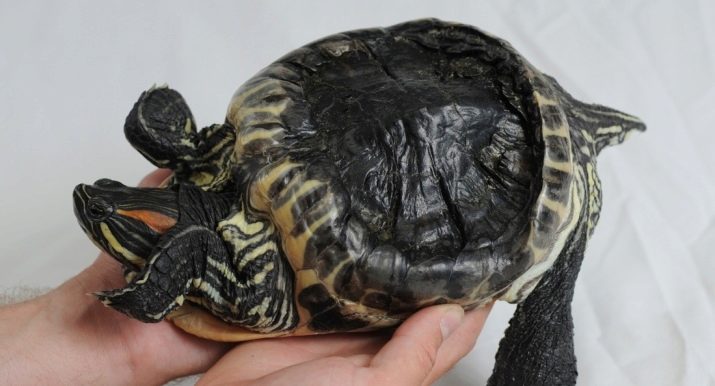
Avitaminosis
This problem is common for many turtles. With a lack of vitamins, their carapaces begin to flake off. Pets become more lethargic and lose their appetite. Over time, animals begin to peel off the skin, and paws are deformed. The bones become more brittle, so the turtle crawls less and less. To restore the health of your pet, it is important to get advice from a good specialist and make up with him the ideal diet for the reptile.
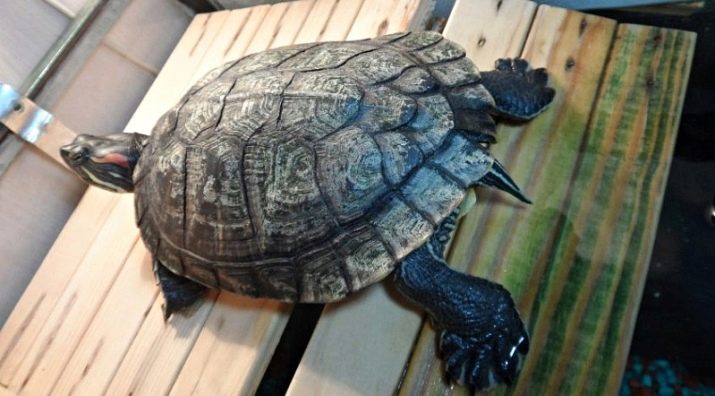
Burn or injury
In some cases, a tortoise's shell may peel off from injury or burns. In this case, the shields on it become soft. In addition, blood often leaks from the cracks in the carapace. In order to prevent the development of infection, the animal must be immediately shown to the veterinarian. He will be able to determine the characteristics of the disease, as well as select the most appropriate medications. You shouldn't let everything take its course and hope that the wound will heal on its own. Without proper care, it can fester.
To keep the animal healthy, it is important to closely monitor its condition, as well as feed it regularly. In this case, the turtle will feel good both during and after molting.
